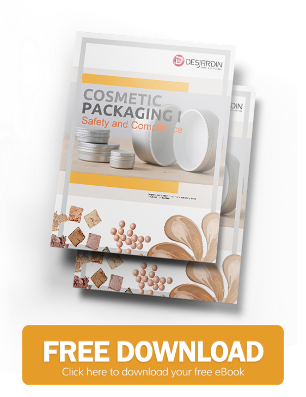The Federal Food, Drug and Cosmetic Act (FD&C Act, FFDCA or FDCA) of 1938 established the parameters for cosmetics marketing in the United States. The following explains how the FDA regulates cosmetic products.
This law in section 201(i) defines cosmetics as "articles intended to be rubbed, poured, sprinkled or sprayed on, introduced into or otherwise applied to the human body ... for cleansing, beautifying, promoting attractiveness or altering the appearance."
FDA Regulation: Cosmetics vs. Drugs
While pharmaceuticals are classified as medicine, cosmetics are not. The FD&C Act defines drugs partly as "articles for use in the diagnosis, cure, mitigation, treatment or prevention of disease." Drugs relate to therapeutic use and are considered in section 201(g)(1) to be different from food, that "affect the structure or any function of the body of man or other animals."
Unlike food, cosmetics do not have to be approved by the FDA, except for color additives. But cosmetics must comply with regulations of the FD&C Act. Additionally, there are laws that apply to packaging cosmetic containers, in accordance with the Fair Packaging and Labeling Act. Despite the fact that cosmetics must meet minimal requirements, they are still regulated by the FDA. If a company fails to comply with regulations, the FDA can take action against them through the Justice Department. In some cases, persons can face criminal suits for law violations.
Cosmetic Examples
- skin moisturizer
- perfume
- lipstick
- fingernail polish
- eye and facial makeup
- cleansing shampoo
- deodorant
Hair colors and permanent waves also fit the legal definition of cosmetics, along with other substances. Soap, however, is not considered a cosmetic product. When marketing involves interstate commerce, cosmetic products may not contain poisonous, contaminated or decomposed substances and must be branded properly.
Here are examples of misbranding:
- labels with false or misleading information
- not all ingredients or required information are listed on the label
- required information is not conspicuous
- misleading containers
- failure to list material facts involving safe use and warnings
- color additives besides hair dye do not meet applicable regulations if FD&C Act section 721
- packaging or labeling violates the Poison Prevention Packaging Act of 1970, section 602
Safety of Cosmetics
 Manufacturers and marketers of cosmetics are legally responsible for meeting government regulations of products, even though safety tests are not required. Furthermore, companies are not required to share any safety information with the FDA. In other words, it's up to cosmetics companies to conduct their own testing to make sure toxic products are kept off the market. Companies don't even have to disclose safety information to the FDA.
Manufacturers and marketers of cosmetics are legally responsible for meeting government regulations of products, even though safety tests are not required. Furthermore, companies are not required to share any safety information with the FDA. In other words, it's up to cosmetics companies to conduct their own testing to make sure toxic products are kept off the market. Companies don't even have to disclose safety information to the FDA.
No registration is required to market cosmetics. However, the FDA at times may inspect the facilities of cosmetic manufacturers. In the event a cosmetic product is found to be dangerous to the public, it is up to the manufacturer or distributor to take voluntary action to resolve the issue. While the FDA does not have the authority to recall a cosmetic product, the agency still monitors the industry and sometimes requests companies to recall their own products. The FDA does monitor imports.
Reasons for voluntary recall include:
- deceptive marketing
- defective products
- safety hazards
Conclusion
The FDA states: "The safety of a product can be adequately substantiated through (a) reliance on already available toxicological test data on individual ingredients and on product formulations that are similar in composition to the particular cosmetic and (b) performance of any additional toxicological and other tests are appropriate in light of such existing data and information." Compared with the food and drug industries, cosmetic manufacturers and distributors face limited government oversight. Companies must still take responsibility for ensuring that their products are safe.
References and Further Reading
- More posts on Cosmetic Packaging, by Alex Cosper and Dawn M. Turner
- Is It a Cosmetic, a Drug, or Both? (2016), by the U.S. Food and Drug Administration
- Regulation (EC) No ´1223/2009 on Cosmetic Products (2009), The European Parliament the the European Council
- ISO 22715:2006: Cosmetics -- Packaging and labelling (2006), International Organization for Standardization






